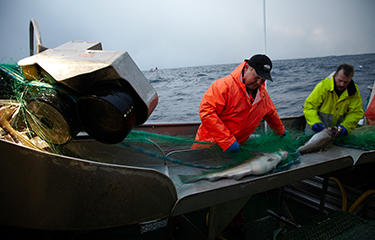Through digital negotiations, Norway and Russia have reached a fisheries agreement for 2023 that includes a 20 percent quota cut for Northeast Arctic cod – in line with scientific recommendations.
The total quota for Northeast Arctic cod for 2023 was set at 566,784 metric tons (MT), in line with the fishery's existing management rule.
“It is good that we have concluded a fisheries agreement with Russia, despite the fact that we are in an extraordinary situation,” Norway Fisheries and Oceans Minister Bjørnar Skjæran said. “The agreement ensures marine management in the northern areas that is both long-term and sustainable, and in this way, we take care of the world's largest cod stock and the other species in the Barents Sea.”
Distributed between Norway, Russia, and third-countries according according to the same ratio as in previous years, Norway's quota for 2023 will be 260,782 MT.
The total quota for haddock is set at 170,067 MT for 2023, with Norway getting 84,177 MT.
At the talks, the countries decided to open the capelin fishery in 2023 within a total quota of 62,000 MT, in line with the existing management rule for the fishery. The Norwegian share amounts to 37,150 MT.
The total quota for blue halibut in 2023 is set at 25,000 MT, with Norway getting 12,735 MT.
Norway is reducing the transfer of pollock to Russia for fishing in Norway's economic zone by 605 MT for 2023. The transfer of blue halibut from Russia to Norway was also reduced, by 240 MT, for 2023.
The parties also agree to continue working on a management plan for prawns.
The two countries’ fisheries agreement also contains technical regulations for the practice of fishing, control measures, and research collaboration. There is a longstanding research collaboration between Norway and Russia on living marine resources and the ecosystem in the Barents Sea, and the parties agreed on a joint Norwegian-Russian research program for 2023.
With Russian scientists being temporarily suspended from the International Council for the Exploration of the Sea (ICES) due to the Ukraine conflict, the joint stock quota recommendations for 2023 were drawn up in a bilateral working group between the Institute of Marine Research and the Russian research institute VNIRO.
Norway said the working group followed the ICES methodology and framework for stock assessment and advice.
“Norway stands up for the sanctions against Russia and controls that the sanctions regulations are complied with, while at the same time we advocate for sustainable fisheries management,” the Norwegian government said. “The Russian side has announced that the fisheries agreement for 2023 may be suspended if further tightening is introduced in the restrictions Norway has introduced for Russian fishing vessels calling at Norwegian ports.”
Earlier in October, Norway introduced measures that restrict Russian fishing boats to just the three ports of Kirkenes and Båtsfjord in the Barents Sea, and Tromsø in the Norwegian Sea. Vessels visiting these ports will also be subject to closer customs and security checks.
The new requirements were implemented to prevent Russian fishing vessels from circumventing the sanctions placed on Moscow.
Photo courtesy of Georg Kristiansen/Shutterstock







